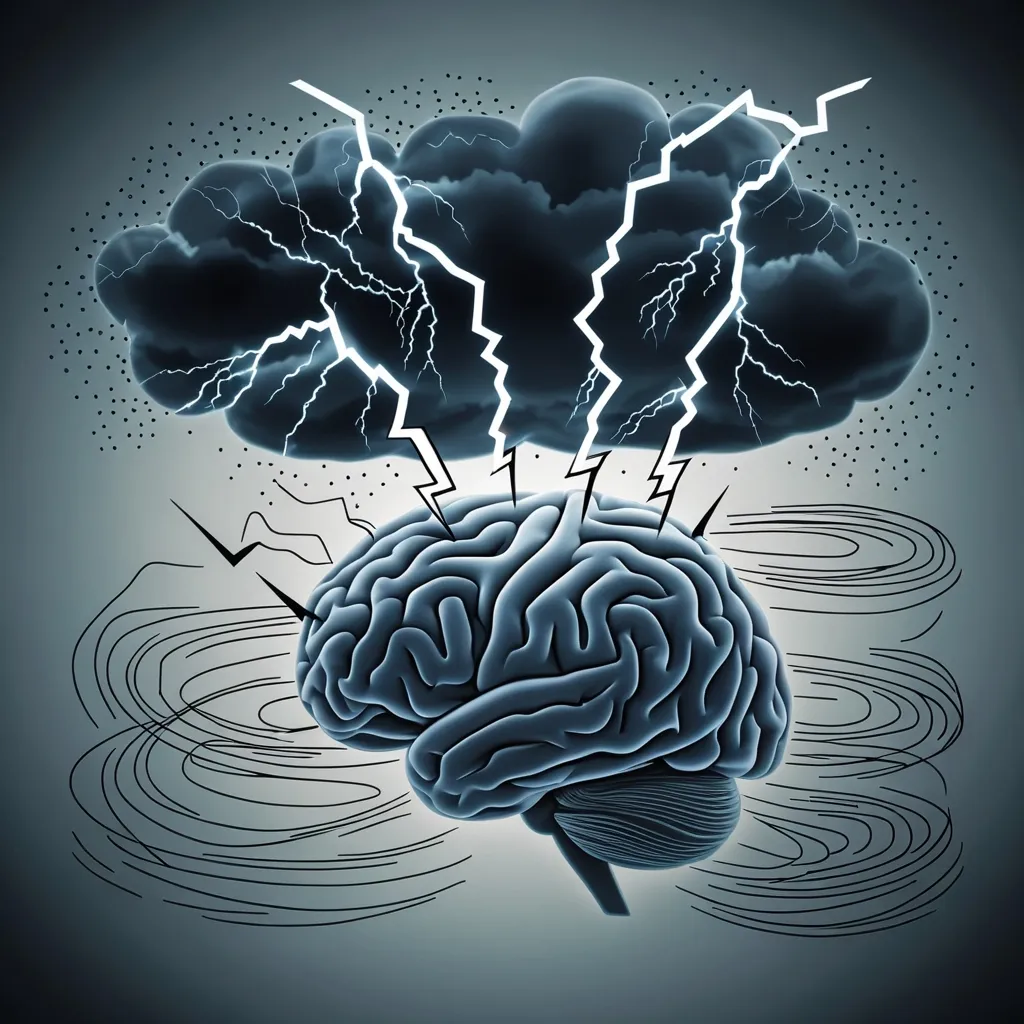Migraines are totally a game-changer, and not in a good way. They hit hard with intense, throbbing pain and usually bring along some pretty miserable buddies like nausea, and sensitivity to light and sound. It’s like your whole day, or even a few days, can just get wiped out.
The Brain, Migraines and All the Funky Activity
So, what’s going on in the noggin during a migraine? It’s all about brain activity, especially in the cerebral cortex area. This part of the brain can start acting up, leading to a bunch of weird symptoms like issues with seeing and moving, and even thinking straight. The occipital lobe, the part of your brain that handles vision, is usually the main culprit. That’s where the infamous aura comes from that some people see before the migraine really kicks in.
When docs peek into the brain with imaging tech, they see some wild stuff. The blood flow and metabolic activity go haywire. This is similar to something called cortical spreading depression (CSD). It’s like a wave that hits your brain and messes with its electrical activity big time. This is a big part of why the aura happens.
The Wild Ride of Migraine Symptoms
The fun starts with what they call the prodrome phase. It’s kind of like the opening act where you might notice mood swings, random neck pain, sudden food cravings, and weirdly enough, these can show up hours or days before the main event. Most folks think these are triggers, but they’re more like the early warning system.
Then comes the migraine itself. The headache is the headliner here, usually with a pounding or throbbing pain that can take over one or both sides of your head. It’s not just discomfort; it can be downright incapacitating. Movements, bright lights, loud noises, and certain smells can make it worse, which is why a dark, quiet room becomes your best friend.
Nausea and vomiting are often in the lineup too. Light, sounds, and even smells become your worst enemies, and trying to think or focus is nearly impossible. This horror show can last anywhere from a few hours to several days. When it finally eases up, there’s the postdrome phase, where you’re left feeling like a rung-out rag—exhausted and confused.
Different Flavors of Migraines
Not all migraines are built the same. There are the ones with aura and the ones without. The aura type brings visual trips, like jagged lights and weird tingling sensations, along with issues in balance or speech. Migraines without the aura don’t have those extra symptoms but still pack a punch with the headache and all the other usual suspects.
What Sets Migraines Off
Figuring out what triggers a migraine can feel like detective work. They can be set off by just about anything: lack of sleep, rapid weather changes, hunger, stress, hormonal fluctuations, strong smells, loud noises, motion sickness, low blood sugar, and even some meds. Migraines are also a family affair, tending to run in families, and they’re more likely to badger women than men by a factor of three.
Keeping Migraines in Check
There’s no magic bullet to cure migraines, but there are ways to manage the mayhem. Medications come in handy to stop a migraine in its tracks, ease the pain, and cut down the frequency and intensity of attacks. Common meds for this include triptans, ergot derivatives, and antiemetics.
Apart from meds, there are some cool tricks like relaxation techniques, yoga, and biofeedback that can help you chill out and reduce the frequency of migraines by handling stress better. Keeping a headache diary can be a game-changer too. It helps in spotting triggers and fine-tuning your treatment plan. Avoiding triggers—bright lights, loud noises, and funky smells—also helps big time.
Lifestyle Tweaks to Ease the Pain
Sometimes the key to fewer migraines is a good habit overhaul. Regular sleep schedules, a balanced diet, and steering clear of known triggers can make a huge difference. Stress management is the name of the game here. Techniques like deep breathing, meditation, and a little physical exercise can work wonders.
The Massive Impact of Migraines
These aren’t your run-of-the-mill headaches; migraines can throw a major wrench in your daily life. Work, social activities, and even personal relationships can feel the strain. It’s like always living on edge, not knowing when the next migraine might strike. But with the right mix of treatment and lifestyle tweaks, it’s definitely possible to tame the beast and improve the overall quality of life.
What’s Next in Migraine Research?
The science game is strong, and researchers are diving deep into figuring out the nitty-gritty of what causes migraines and how they tick. Understanding the complex dance between brain activity, blood vessel changes, and neurotransmitter imbalances is key to unlocking better treatment options. For now, it’s all about combining medication, lifestyle changes, and behavioral interventions for the best defense against these debilitating headaches.
So, while migraines are seriously complex and super challenging, understanding them better and finding the right approach to management can lead to a much-improved life where migraines aren’t calling all the shots.






